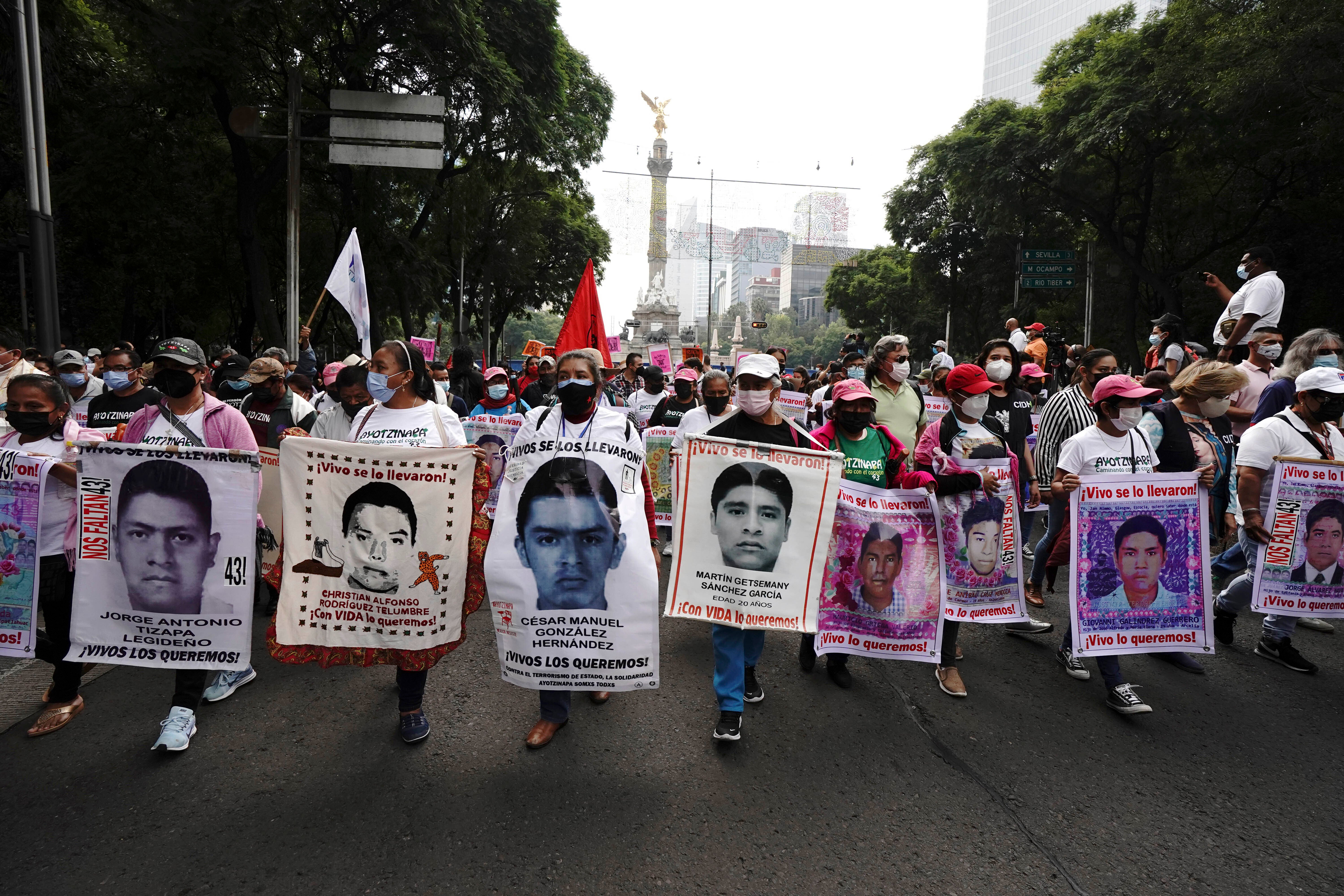Justice elusive 7 years after students abducted in Mexico
Several thousand students and political activists have marched through downtown Mexico City to demand authorities find out what happened to 43 teacher’s college students who disappeared in 2014

Your support helps us to tell the story
From reproductive rights to climate change to Big Tech, The Independent is on the ground when the story is developing. Whether it's investigating the financials of Elon Musk's pro-Trump PAC or producing our latest documentary, 'The A Word', which shines a light on the American women fighting for reproductive rights, we know how important it is to parse out the facts from the messaging.
At such a critical moment in US history, we need reporters on the ground. Your donation allows us to keep sending journalists to speak to both sides of the story.
The Independent is trusted by Americans across the entire political spectrum. And unlike many other quality news outlets, we choose not to lock Americans out of our reporting and analysis with paywalls. We believe quality journalism should be available to everyone, paid for by those who can afford it.
Your support makes all the difference.Several hundred students and political activists marched through downtown Mexico City on Sunday to demand authorities find out what happened to 43 teacher’s college students who disappeared in 2014.
Police in the southern city of Iguala handed the students over to drug gang members, who purportedly killed them and burned their bodies believing they were working for a rival crime group.
Marchers carrying photos of the youths chanted slogans like “Where are they?” They also held placards and banners reading “Until We Find Them!”
But seven years after the mass abduction on Sept. 26, 2014, real evidence of the students’ fate has been slow in coming.
Omar Gómez Trejo, the lead investigator in the case, said earlier this week that bone fragments found near a garbage dump near Iguala had been matched to three of the 43 students.
But unlike earlier investigations — now discredited because of allegations that suspects were tortured and evidence was mishandled — Gómez Trejo said the students' remains were likely scattered in several places and not all had been burned at the dump.
Forensic experts have rejected conclusions reached under a previous administration that almost all the students were killed and burned at the dump. Experts said there was no evidence of any fire at the site large enough to have incinerated the 43.
Gómez Trejo said some bone fragments were found at a site almost a half mile (800 meters) away, and some had not been burned.
“Many of them had not been exposed to fire, but rather were exposed to weathering,” he said.
Instead of there being one single site and method of disposal, Gómez Trejo said cooperating witnesses — some of whom took part in getting rid of the bodies — have described “various routes with various bags” full of remains.
Over seven years of investigations into the case, Mexican authorities have found dozens of clandestine graves and 184 other bodies, but have recovered only the three fragments of the missing students.